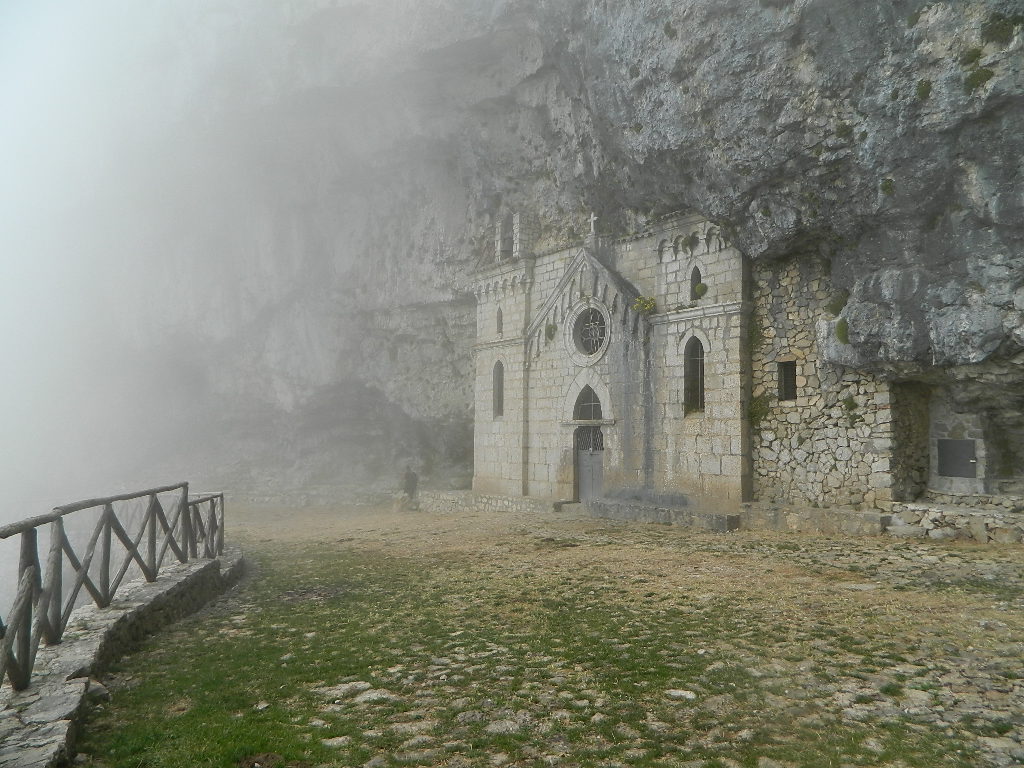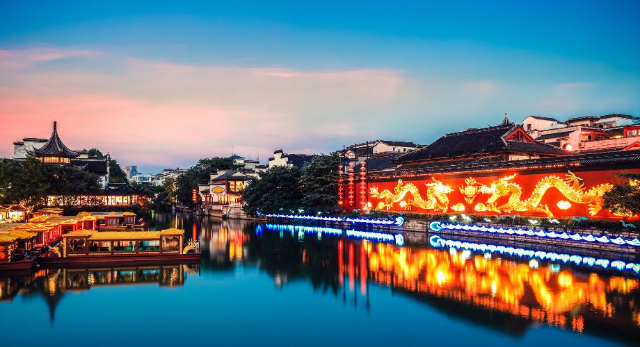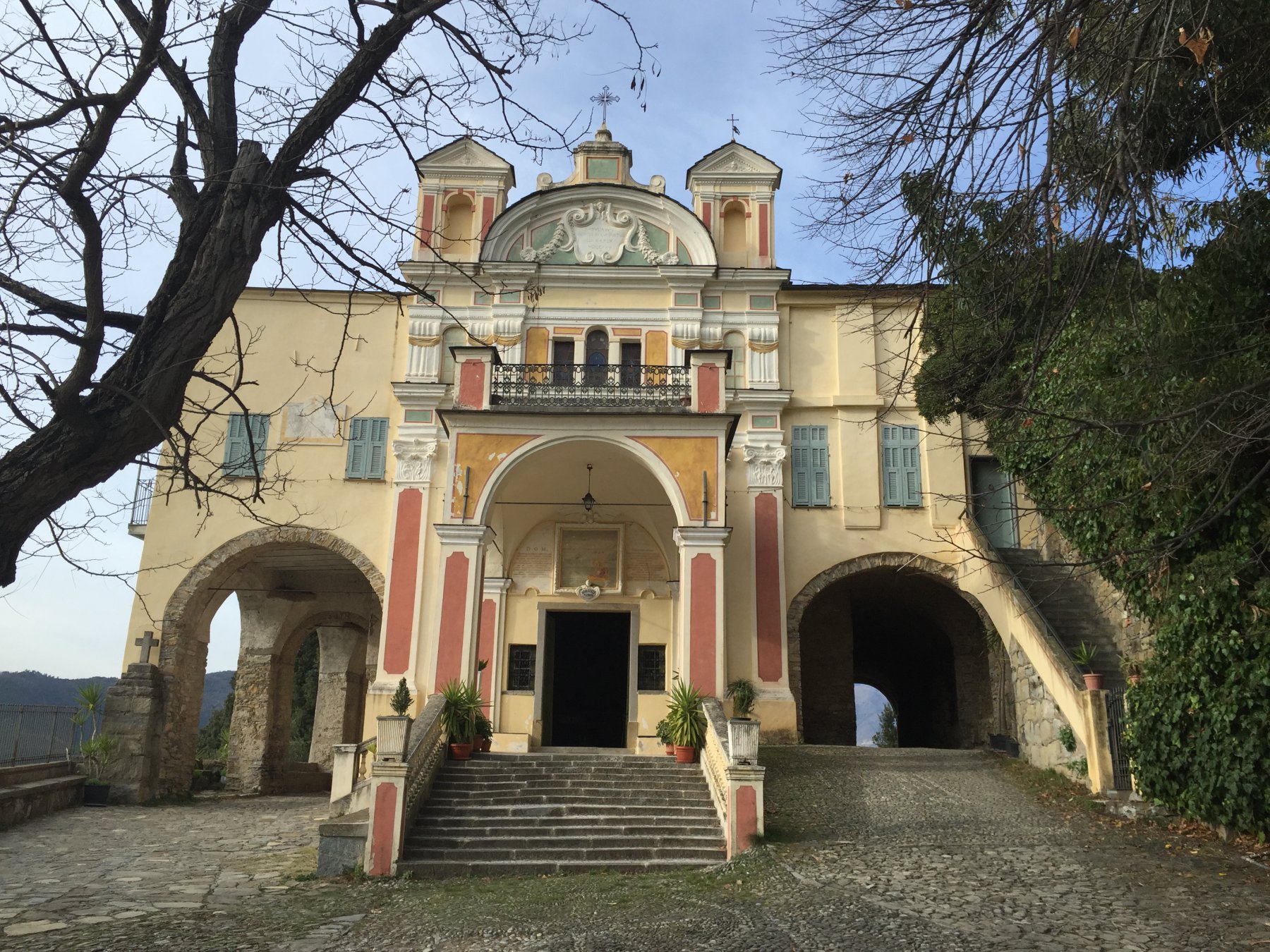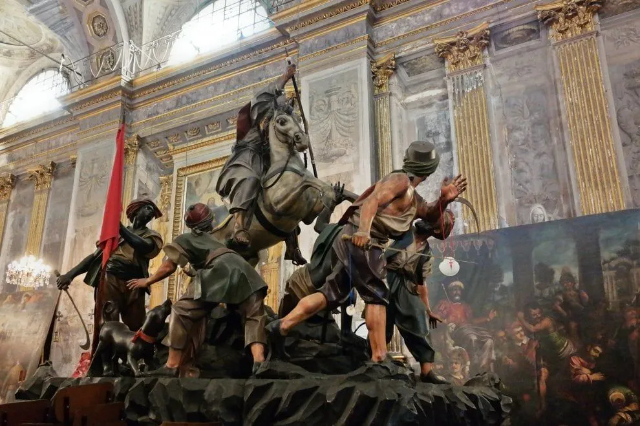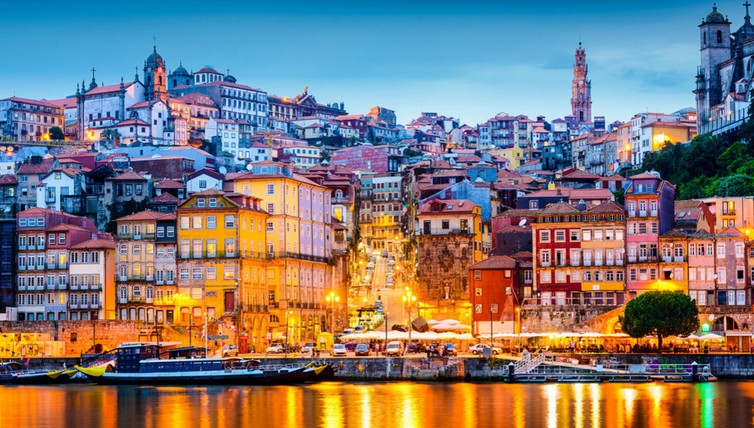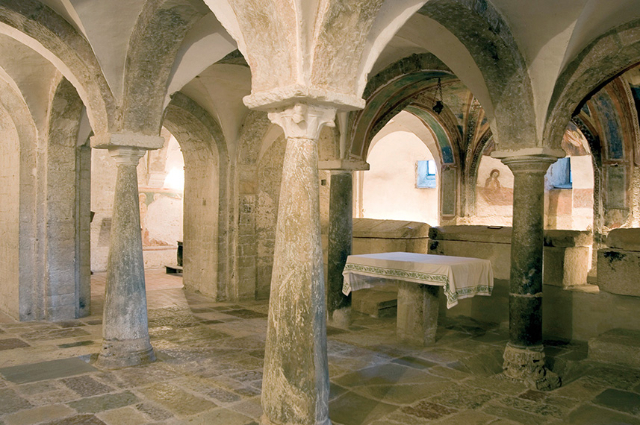From Maranola, not far from Formia, toward the locality of Pornito (819 m.) begins the "Pilgrim’s Path" that climbs to the Hermitage of St. Michael Archangel, a striking rock church hollowed out and almost camouflaged in a huge cave (1,100 m.),
he rock sanctuary, dedicated to St. Michael the Archangel, dates back to 830, in fact it is mentioned in the Codex diplomaticus cajetanus. However, the stone facade, which closes a natural cavity, was rebuilt in neo-Gothic style at the end of the 19th century, in 1893, when Archbishop Francesco Niola ascended Mount Altino on a pastoral visit.
The façade, facing west and with two projecting volumes on either side, has an arched front door in the center, surmounted by an open rose window to give light to the interior of the church. On the arch of the door, next to the inscription "Angelorum Principi," are the dates 830, the year of the foundation of the old coenoby, and August 5, 1895, the day the new shrine was inaugurated. These dates also appear on a plaque placed inside the church. Both the rose window and the other openings in the facade were closed by polychrome stained glass windows, now lost.
With the construction of the new shrine, a new access road was also opened, from where the new route was made, while the old St. Michael’s route, which was much more uncomfortable, was thus abandoned.
The area is very rich in spring water, which percolates just about everywhere from the rocky vault. The inside walls of the church itself serve as a spring, and the very cold water is collected in several masonry basins. Outside there is a small one before the sanctuary and a larger one at the back used by livestock.
The location of the chapel carved out of a cave just on the slopes of the mountain is linked to an old folk tale that it was the saint’s own statue that indicated where it wanted to be venerated. Originally placed in a cave along the coast of Gianola (a hamlet of Formia), it seems that the statue, offended by the unchristian language of the sailors of the time, had left for Mount Sant’Angelo, in the territory of Spigno Saturnia. Even from its new position, at 1252 m above sea level, on a rock face facing the sea, it could see the sailors, so it would have decided to move to Monte Altino, to a hollow in the rock facing west.
The inhabitants of Spigno tried several times to bring it back to their territory, but miraculously the statue always returned to its present location, in the territory of Maranola. The small chapel in honor of St. Michael the Archangel was then built.
Since that time, every year on the last Sunday of June and September 29, the climbing of St. Michael takes place: during a solemn procession, the devout men of Maranola carry the statue of the saint on their arms through the winding paths of the mountain
